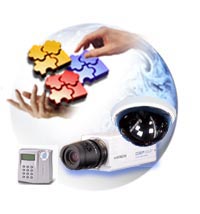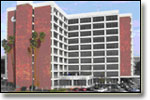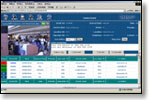
|
 Ortega InfoSystems Success Stories
Ortega InfoSystems Success Stories
Fresno Community Hospital
Overview
 Community Regional Medical Center (CRMC), offers a full-service
emergency department, state-of-the-art radiology and cardiology
departments, inpatient and outpatient surgery, dialysis,
rehabilitation, pediatric services, and cancer treatments. CRMC
remains the largest of Community Medical Center's three acute-care
facilities and is adjacent to the new trauma and critical care
building, the centerpiece of the 58-acre medical campus in the heart
of downtown Fresno.
Community Regional Medical Center (CRMC), offers a full-service
emergency department, state-of-the-art radiology and cardiology
departments, inpatient and outpatient surgery, dialysis,
rehabilitation, pediatric services, and cancer treatments. CRMC
remains the largest of Community Medical Center's three acute-care
facilities and is adjacent to the new trauma and critical care
building, the centerpiece of the 58-acre medical campus in the heart
of downtown Fresno.
Community Regional Medical Center is leading the largest redevelopment
project ever in the city of Fresno. Plans call for the development of 58
acres into a state-of-the-art medical campus. The trauma and critical
care building is adjacent to the existing 5- and 10-story buildings
formerly called Community Medical Center-Fresno. Upon completion, CRMC
will provide premier medical facilities, including the region's only
burn and level 1 trauma centers, a proposed 91,000-square-foot
ambulatory care center and a University of California, San Francisco,
Fresno Medical Education and Research Center.
Services will include emergency, trauma, burn, intensive care,
inpatient surgery, heart catheterization labs, and radiology. It will
include 58 intensive-care beds, 10 intensive-care burn treatment rooms,
eight additional operating rooms, 68 treatment areas in the emergency
department, and two rooftop helicopter landing pads.
Situation
 CRMC is one of the major regional medical centers taking the
initiative to upgrade the video surveillance and security systems. It has
installed the CCTV and access control system throughout the campus, however
both systems remain unintegrated. So all information could only be accessed
in one single security control center. The security professionals at the
emergency dispatch center were unable to receive overall information
should an event occur. Response time is critical, and it took a lot
of time to gather enough information from several systems before a
response or decision could be made. This project was to manage all
buildings, parking lots, and public areas in the campus. This included:
CRMC is one of the major regional medical centers taking the
initiative to upgrade the video surveillance and security systems. It has
installed the CCTV and access control system throughout the campus, however
both systems remain unintegrated. So all information could only be accessed
in one single security control center. The security professionals at the
emergency dispatch center were unable to receive overall information
should an event occur. Response time is critical, and it took a lot
of time to gather enough information from several systems before a
response or decision could be made. This project was to manage all
buildings, parking lots, and public areas in the campus. This included:
-
More than 300 Cameras (most of them are PTZ models)
-
Enterprise-class Access Control System, manage more than 1200
doors/contacts and 1500 access cards
-
More than 20 DVRs, 16-channel each
-
More than 15 digital live video workstations running Ortega Client
Solution by Ortega
CRMC selected FacilitySm@rt to integrate various on-site security
systems — such as CCTV and access control systems — on a single
browser-based graphic interface. Therefore the security professionals
at the campus and the 911 emergency dispatch center could access
integrated security information, remotely or locally, from any
workstation on the private network. This greatly simplified the
security operation. Moreover, a single graphic interface dramatically
shortened the response time.
System Architecture
-
Provide camera coverage for surveillance and control from the control
console located at the security desk in the 911 emergency dispatch
center. Provide the digital graphic system interface required to
interface equipment on the system network.
-
Enterprise Surveillance Graphical Security Integration Subsystem
(GSIS):
Coordinate integration of this subsystem with the contractor
furnishing and installing the GSIS.
Program the GSIS system control, maps, icons, alarms, and user
interface screens as required to seamlessly integrate system
control with the existing GSIS system.
Provide network workstations, connections, and control cables
required to connect this subsystem to the GSIS system via the
CRMC ethernet network.
Coordinate selection of IP addresses with the GSIS contractor.
Provide Sm@rtNode software required to interface the access control
system and digital video recorders to the GSIS system.
Provide GSIS log-on for use via Web browser on the GSIS workstation.
Limit maps, event info, and camera views for this log-on to local
cameras only.
This project included 2 interface systems:
-
Application Server/Sm@rtNode: It hosts the Ortega FacilitySm@rt
Web page and services, and provides the software interface to
other subsystems.
-
Ortega GUI Workstations (more than 15 units): Provide the
integrated GUI functions for the operator who wants to view live
video from DVRs and receive the event/alarm information.
System Features
-
Intuitive Mapping Graphical Interface
FacilitySm@rt's easy-to-use site map interface is extremely
intuitive. Icons of devices, like cameras, doors, and motion sensors,
are displayed right on the screen. One click on a device icon brings
up real-time information associated with the selected device. Remote
device control is exercised through clicking on device icons, whether
it is directing PTZ cameras, locking doors, or turning on lights.
FacilitySm@rt's site map interface enables users to visualize the
location of each device and proves to be the most effective user
interface.
-
Integrated Alarm Summary and Verification
The FacilitySm@rt alarm summary page displays overall alarm
information on one page, including alarm location and site map,
real-time video, pre and post alarm video clips, alarm response
procedures, and emergency alarm notification. Users may view all
information at one glance without switching from one security system
to another. FacilitySm@rt ensures a timely and professional response
to each alarm.
-
Remote Monitoring and Control
FacilitySm@rt's convenience and global accessibility allows authorized
users to review and respond anywhere, anytime. No need to install
special software.
Result
The new baseline security management system includes firewalls,
password-protected commands, and control capabilities through a remote
Web-enabled management system for CRMC campus facilities. The integrated
system did help ensure secure and fast communication among a variety of
security agencies in the event of an emergency. And because of its
open-system architecture and scalability, it truly reduces the total cost
to grow and maintain the system.
|


 Ortega InfoSystems Success Stories
Ortega InfoSystems Success Stories
 Community Regional Medical Center (CRMC), offers a full-service
emergency department, state-of-the-art radiology and cardiology
departments, inpatient and outpatient surgery, dialysis,
rehabilitation, pediatric services, and cancer treatments. CRMC
remains the largest of Community Medical Center's three acute-care
facilities and is adjacent to the new trauma and critical care
building, the centerpiece of the 58-acre medical campus in the heart
of downtown Fresno.
Community Regional Medical Center (CRMC), offers a full-service
emergency department, state-of-the-art radiology and cardiology
departments, inpatient and outpatient surgery, dialysis,
rehabilitation, pediatric services, and cancer treatments. CRMC
remains the largest of Community Medical Center's three acute-care
facilities and is adjacent to the new trauma and critical care
building, the centerpiece of the 58-acre medical campus in the heart
of downtown Fresno.
 CRMC is one of the major regional medical centers taking the
initiative to upgrade the video surveillance and security systems. It has
installed the CCTV and access control system throughout the campus, however
both systems remain unintegrated. So all information could only be accessed
in one single security control center. The security professionals at the
emergency dispatch center were unable to receive overall information
should an event occur. Response time is critical, and it took a lot
of time to gather enough information from several systems before a
response or decision could be made. This project was to manage all
buildings, parking lots, and public areas in the campus. This included:
CRMC is one of the major regional medical centers taking the
initiative to upgrade the video surveillance and security systems. It has
installed the CCTV and access control system throughout the campus, however
both systems remain unintegrated. So all information could only be accessed
in one single security control center. The security professionals at the
emergency dispatch center were unable to receive overall information
should an event occur. Response time is critical, and it took a lot
of time to gather enough information from several systems before a
response or decision could be made. This project was to manage all
buildings, parking lots, and public areas in the campus. This included: